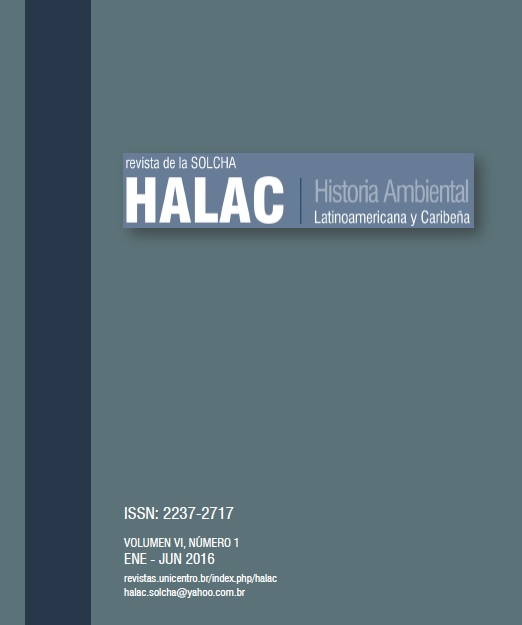Landscape reading methodology of urban forests: interpreting past and current socioecological interactions in Rio de Janeiro
DOI:
https://doi.org/10.5935/2237-2717.20160011Resumo
The landscapes of Rio de Janeiro are a product of a long history of the society interacting with the forest, with the legacies of this historical interaction being imprinted and hidden within the vegetation cover. Reading this landscape requires the following steps: 1) a comprehensive history of the process of human occupation and land uses; 2) revealing, through material evidence past human uses; 3) deciphering current ecological change, through species structure and composition (exotic species, different assemblage patterns). The requirements to accomplish these steps stem from field knowledge mainly from geography and ecology, and archival knowledge in researching historical documents. Here we highlight the importance of a multi-scalar approach, reading the landscape from a broad perspective using GIS and satellite imagery to understand the spatial distribution of the physical, ecological and social elements of the landscape.Downloads
Publicado
2016-09-09
Como Citar
Solorzano, A., Oliveira, R. R. de, & Lazos-Ruiz, A. E. (2016). Landscape reading methodology of urban forests: interpreting past and current socioecological interactions in Rio de Janeiro. Historia Ambiental Latinoamericana Y Caribeña (HALAC) Revista De La Solcha, 6(1), 211–224. https://doi.org/10.5935/2237-2717.20160011
Edição
Seção
Artigos
Licença
Esta revista oferece acesso livre imediato ao seu conteúdo, seguindo o princípio de que disponibilizar gratuitamente o conhecimento científico ao público proporciona maior democratização mundial do conhecimento.
A partir da publicação realizada na revista os autores possuem copyright e direitos de publicação de seus artigos sem restrições.
A Revista HALAC segue os preceitos legais da licença Creative Commons - Atribuição-NãoComercial 4.0 Internacional. 




